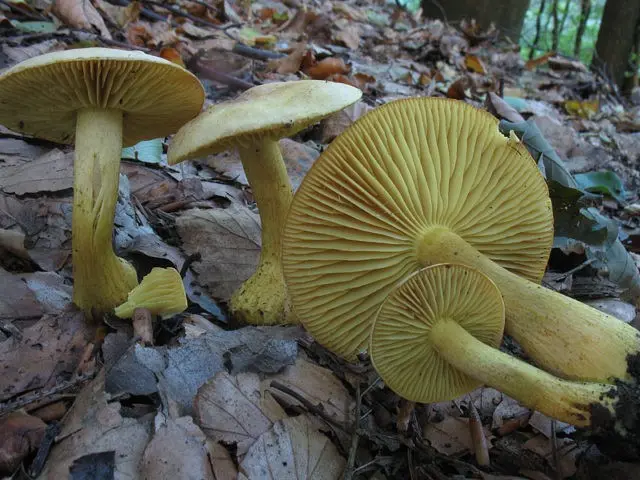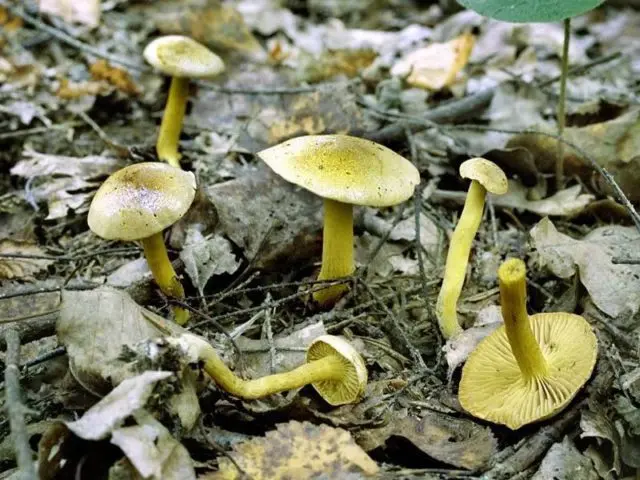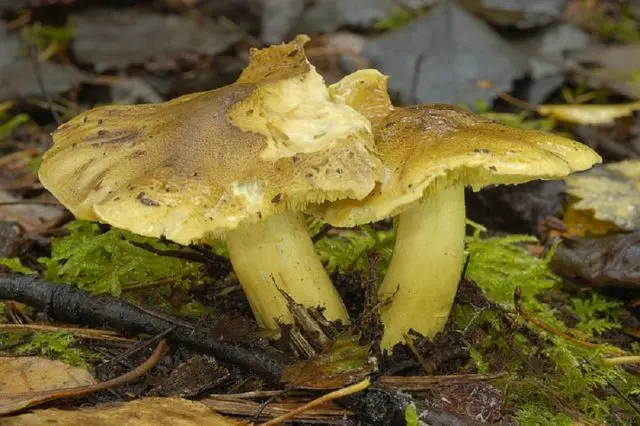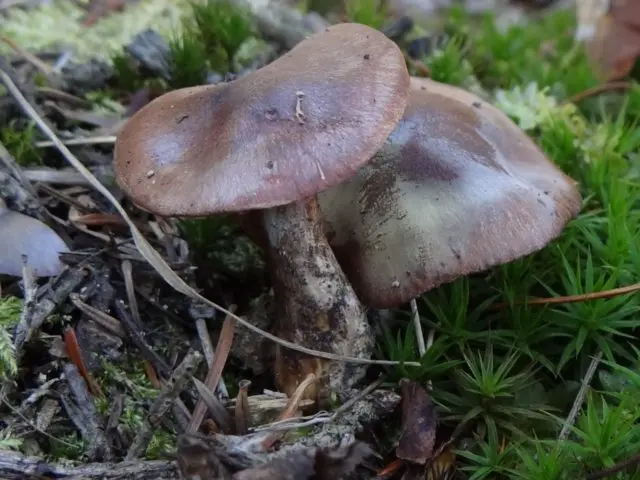Contents
Ryadovka sulfur-yellow, called in Latin Tricholoma sulphureum, is a representative of a large family of Tricholomovs (Ryadovkovs). It includes both edible and poisonous varieties. The latter includes a sulfur-yellow row. Its other names are sulfuric and false sulfuric. The mushroom exudes an unpleasant strong odor.

Where do sulfur-yellow rows grow
Distribution area – almost all regions of Our Country and most European countries, from the Arctic to the Mediterranean region. Mushrooms can be found among conifers, in mixed and deciduous forests. They grow both on the soil and among the forest floor. Often found on sandy soils and soils saturated with limestone.
They are found in groups, and also grow in rows, they are popularly called “witch circles”. Mushrooms create mycorrhiza with beeches, oaks, aspens, sometimes with spruces and firs. Fruiting begins at the end of summer. You can find a row in August – October.
What do sulfur-yellow rows look like?
The hat is medium in size, 2,5-8 cm in diameter. The largest specimens grow up to 10 cm. In young mushrooms, its shape is hemispherical or convex. Then it becomes flatter, and a depression appears in the center.
To the touch, the surface of the cap is smooth or velvety, dry. In conditions of high humidity and after precipitation, it becomes slippery. Color – grayish-yellow, yellow-green, lemon. In old mushrooms, it is closer to brown, with indistinctly defined fibers. The center of the cap is darker.

The flesh is sulfur-yellow, sometimes with a green tint. This coloring makes the row look like an edible greenfinch mushroom. But the smell of poisonous specimens is sharp and unpleasant, chemical, similar to hydrogen sulfide, tar. At the same time, young mushrooms can have a fragrant floral aroma. The pulp tastes bitter.
The leg is 0,5-2,5 cm thick. Its height does not exceed 12 cm. It is cylindrical in shape. The upper part can be thickened or thinned. The color varies from bright yellow near the cap to gray-yellow below. At the base, a white coating and a yellowish mycelium are found. Along the legs in adult representatives of the species are fibers of a darker shade.
Plates with uneven edges, sparse, wide, adherent to the stem.
Is it possible to eat sulfur yellow mushrooms
Experts in the field of mycology disagree on whether to classify the species as poisonous or inedible. In Our Country, it is customary to refer to the first group and characterize it as a mushroom with low toxicity. There are cases of intestinal upset after its use. No deaths have been recorded. Symptoms are similar to poisoning by other poisonous species.
How to distinguish sulfur-yellow rows
The species shows similarities with other mushrooms from the Tricholomov family. The photo and description help to distinguish the sulfur-yellow row from them:
- Row green, or greenfinch. Conditionally edible. It differs in that even after heat treatment it retains its green color. The cap is convex, up to 15 cm in diameter, with a tubercle in the center. Color olive greenish yellow.

- Broken line – edible look. The hat is semi-round, yellowish chestnut or brownish red. It occurs mainly on sandy soils covered with needles or moss. Fruiting begins in January and continues until March. You can use it in any form.

Conclusion
The sulfur-yellow row is similar to the edible representatives of its family. For this reason, only those who accurately distinguish poisonous specimens can collect any of them. If there are no such skills, it is better to leave them in the forest.











